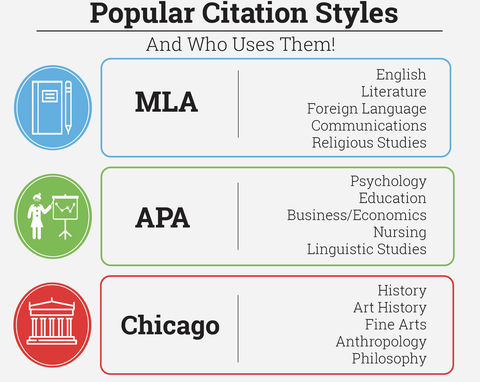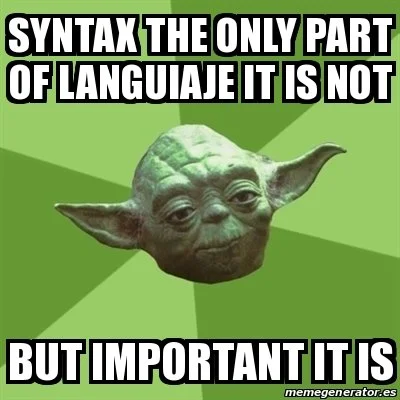Writing Professional Articles: The Little Things That Count
A writer's primary objective is to capture the reader's attention so they can fully digest the argument. To be effective, professional writing must engage the reader to thoughtfully consider the presented material. Formatting and aesthetics, though not arbitrary, are critical to reducing reader distractions. When writing professional articles, one cannot forget the little things, as they can enhance or undermine how your readers interpret, understand, and are influenced by your writing.
Formatting
If you are writing for a specific publication, the publication likely has its own specifics for formatting or has adopted a general style manual, such as Chicago, APA, or MLA style. Though these standards have nuances, many patterns are evident. Before you start writing, identify the standards that you will follow, paying close attention to any deviations from what you are used to. Rather than being meaningless rules, formatting styles are designed to facilitate consistency.
Figure 1: Appropriate applications of major style guides [1].
Formatting your writing could be viewed as your user interface - make it intuitive and enticing. Avoid contractions and refrain from underlining words and phrases you want to emphasize, as that practice is now considered outdated [2]. Moreover, underlines are usually reserved for hyperlinks. Be artful in your use of emphasis, and employ italics to make a point and bold fonts to draw attention. Consider these examples:
When you are intentional with your formatting, it will help your readers focus.
When you are intentional with your formatting, it will help your readers focus.
When you are intentional with your formatting, it will help your readers focus.
When you are intentional with your formatting, it will help your readers focus.
When you are intentional with your formatting, it will help your readers focus.
As shown in the last example, multiple sources of emphasis are unnecessary. Among the forms of emphasis, italics are especially versatile. They are used for titles, captions, headings, defining technical terms, denoting foreign languages, and persuasive writing. However, be mindful that excessive italicization for persuasive effect is more common in prose than in formal academic writing [3].
Syntax
Your writing syntax is how you arrange words in sentences. Speaking syntax and writing syntax are vastly different, but drafts of papers tend to make more use of speaking syntax. It is critical to revise drafts so that words can be rearranged in ways that best help the argument flow. When writing for a global audience, simplifying your syntax and refining sentence flow not only boosts clarity, but it also expedites translation and increases the range of people who can understand your writing [4].
Figure 2: Different languages vary syntax, but keep your English syntax standardized unless you want to sound like Yoda [5].
Generally, this means breaking up longer sentences into shorter ones. An effective methodology for identifying places to split sentences is identifying coordinating conjunctions such as “and” and “but.” Other conjunctions, such as “because” and “therefore,” can be extremely effective, as they demonstrate your reasoning and guide readers through your thought process. There are appropriate situations to use semicolons; when these situations are presented, do not overuse them. The same can be said of commas, which are often uncomfortably placed in complex sentences. The following are examples from some of our articles:
And
Article: “How to Coordinate Product Development Activities”
Good syntax: “Understanding activity dependency allows teams to effectively and efficiently sequence the work and divide the labor in sensible ways.” These ideas flow well together without making the sentence unwieldy.
Improvable syntax: “Making sense of what needs to be done and in what order, and how one bit of work on the team relates to another is a major challenge.” You can sense how the second clause is not a smooth transition from the first sentence.
Therefore
Article: “What Does ‘Design’ Mean?”
Good syntax: “Therefore, invoking clarifying adjectives can find their place in our explanations and dialogue.” This is the ideal usage of the word “therefore.”
Improvable syntax: “The usage, therefore, of ‘design’ can be very helpful to reduce the field and make topics less daunting and palatable.” Here, “therefore” would be better placed at the beginning of the sentence or avoided altogether.
Semicolons
Article: “Dieter Rams: Less But Better”
Good syntax: “Those things are exciting for sure and still give me motivation; however, I’ve since learned…” This semicolon is used effectively.
Improvable syntax: “Does it make an action or activity on the whole more complicated or simpler; is it easy to operate or do you have to learn how to use it?” In this case, the semicolon could simply be replaced by a question mark.
Commas
Article: “The Library of Babel: From Gibberish to Defined Design”
Good syntax: “Engineering gives product designers many useful tools to choose from, especially relating to the physical and mechanical properties and behaviors of a product.” This comma effectively separates two ideas.
Improvable syntax: “Unlike the Library of Babel however, designers aren’t left to random selection.” This comma is used in a way more consistent with speaking than writing.
Takeaways
When writing, keep a close eye on your formatting and syntax. These little things count, and can have a disproportional influence on how others read and digest your writing. Follow standard formatting principles, but remember that formatting is an art to master rather than a strict rule to abide by. After finishing your first drafts, look for ways to revise your syntax, such as splitting long or complex sentences to increase clarity.
References
[1] "Popular Citation Styles And Who Uses Them!" KMS LMC Lessons, 27 July 2017, kmslmclessons.weebly.com/citing-sources.html.
[2] "Underlining: A Business Writing Blog Poll." Business Writing Blog, 14 Feb. 2008, www.businesswritingblog.com/business_writing/2008/02/underlining-a-b.html.
[3] "When to Italicize." UoPeople, 19 Sept. 2023, www.uopeople.edu/blog/when-to-italicize/.
[4] "How English Pre-Editing Improves Translation Quality." Human Science Inc. Blog, 9 Jan. 2024, www.science.co.jp/en/nmt/blog/36514/.
[5] "Meme Generator." Meme Generator, www.memegenerator.es/meme/26578113.
To cite this article:
Conover, Dylan. “Writing Professional Articles: The Little Things That Count.” The BYU Design Review, 6 October 2025, https://www.designreview.byu.edu/collections/writing-professional-articles-the-little-things-that-count.







